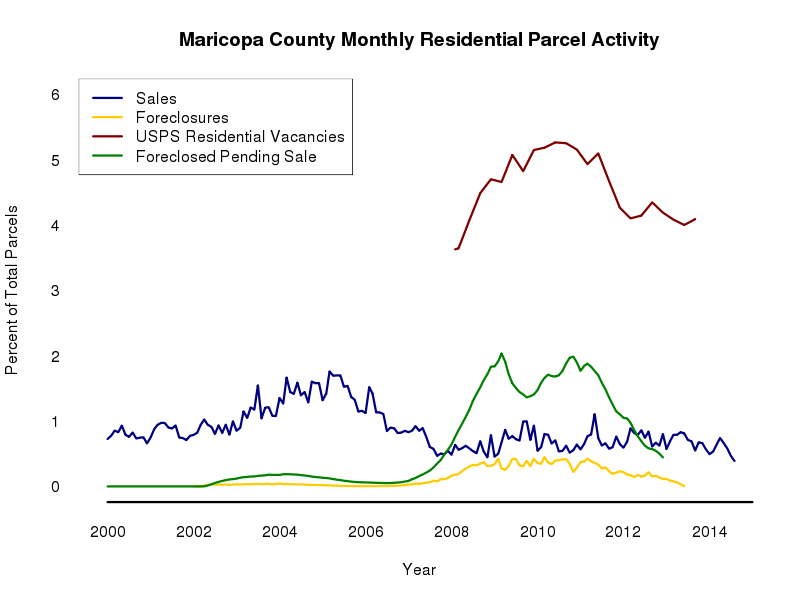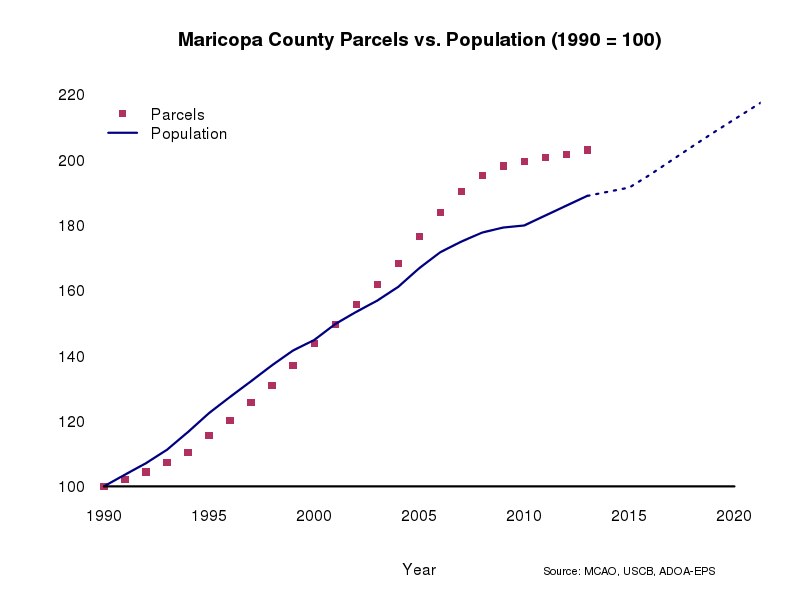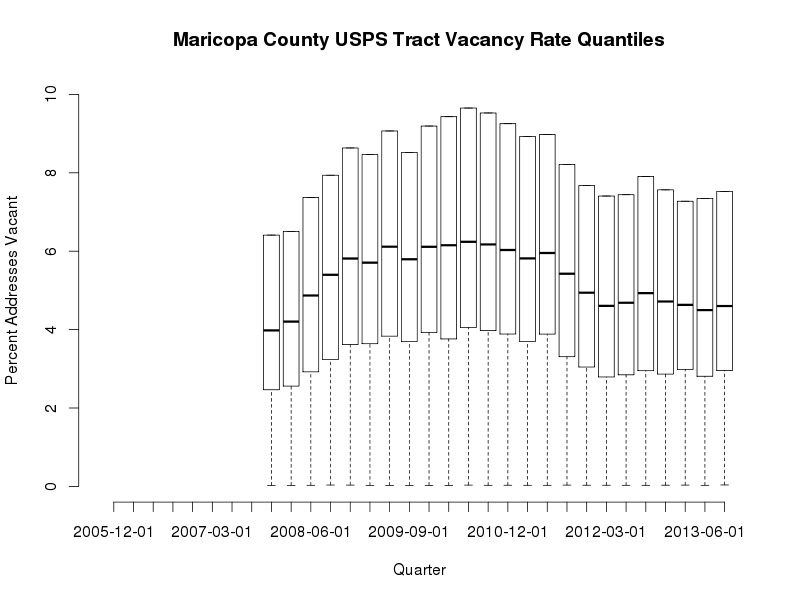Foreclosure Vacancy Analysis
Michael Minn - 19 February 2015
The graph below shows the overall monthly sales and foreclosures expressed as a percent of the total number of residential parcels in 2013. Also graphed are the quarterly USPS vacancy rates and the number of foreclosed parcels awaiting a subsequent sale at the beginning of each month.
Of particular interest is the appearance of a correlation between the USPS reported vacancy rate and the number of foreclosed (and presumably vacant) parcels awaiting sale to a new owner. There are two issues with this perceived relationship.
First, vacancy data for 2010 and later is incomparable to prior years. "In March 2010 USPS began implementation of new procedures to improve the accuracy of the vacant indicator. This changeover has led to an increase in vacancies across the nation, causing year-over-year vacancy comparisons and calculations spanning March 2010 to be problematic." Therefore, the perceived spike in vacancies between 2008 and 2010 is likely an artifact of this change and the level of distortion is uncertain.
Second, although the spike in the graph is dramatic and represents a 17% relative change in vacancy rate, this is only a 1% absolute difference in the number of vacant residential parcels. This indicates that in Maricopa County, even if most of these additional vacancies can be attributed directly to foreclosure, the overall absolute vacancy effect of foreclosure was fairly limited.

If foreclosure is viewed as a part of the larger economic process controlling how housing is produced and allocated, this vacancy spike might also be more-broadly attributable as a lagged effect of an oversupply of housing resulting from the construction boom in the middle of the decade. The graph below (which has been presented before), uses 1990 as a baseline and shows the growth in oversupply of housing relative to population growth during the housing boom. Subsequent vacancy decreases could then be attributed to a slowdown in construction, allowing existing stock to be absorbed in population growth. In this framing, foreclosure is simply part of the churn as the subprime buyers who initially absorbed the surplus are replaced with wealthier owners.

Looking more closely at the USPS residential vacancy data in the box graph below, the wide range of variability in rates across tracts is clearly visible. These vacancy rates do not correlate with median HH income, which is similar to the absence of correlation between income and foreclosure. Vacancy and foreclosure are equal opportunity problems.

Although I have just begun looking at the survey return data, the following are some overall statistics:
- 3,600 addresses
- 24% undeliverable
- 4.8% vacant
The undeliverable rate is a bit high, although it is not out of the ballpark for comparable anecdotal statistics. The vacancy rate is also slightly under comparable statistics and the aforementioned USPS data for Maricopa County.
- A survey of fishermen in Alaska had a 21% undeliverable rate.
- A 2006 survey of Penn State alumni had a 18% undeliverable rate.
- Jury summonses have a 12% undeliverable rate, consistent with the 2007 national migration rate of 17%
- The 2012-2013 mover rate = 11.7%
- 8% of all mail is undeliverable
- The 2013 rental vacancy rate was 8.3% nationally and 6.2% in the West. The 2013 homeowner vacancy rate was 2.0% nationally and 1.6% in the West.